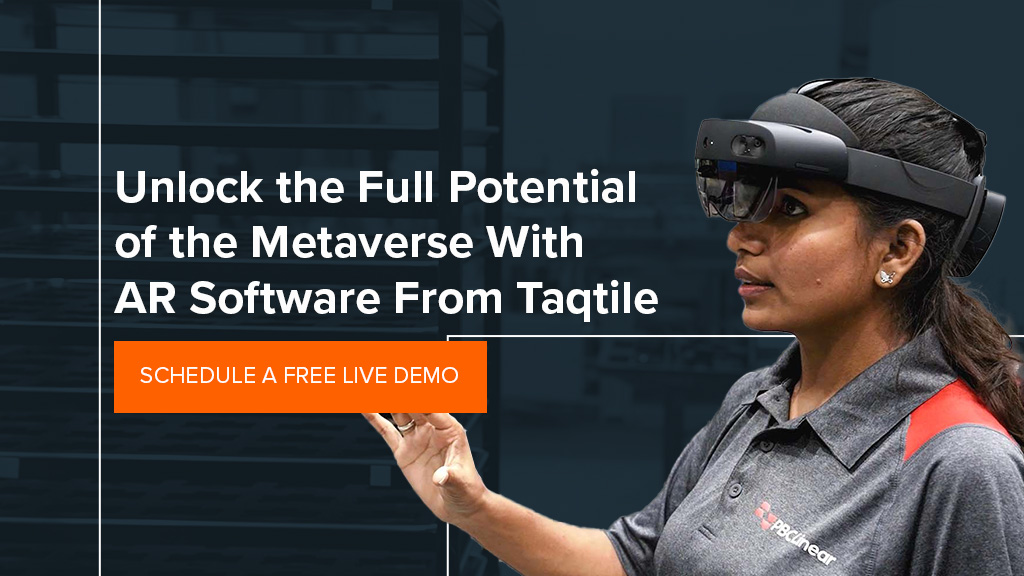Welcome to the Metaverse
The concept of the metaverse has been gaining a lot of attention lately, and there’s no sign of stopping. The metaverse market share is expected to rise to $936.6 billion by 2030 — a massive jump from a projected $82 billion in 2023.
But what is the metaverse exactly? In this comprehensive guide, we’ll give an in-depth explanation of the metaverse, how it works and what the future of the metaverse looks like. With the metaverse defined, you’ll clearly understand what the term means and what it entails.
What Is the Metaverse and How Does It Work?
The metaverse is a term used to describe a fully immersive digital world interconnected with the real world. It can be understood as a combination of virtual and physical reality, where users can interact seamlessly with each other and the environment.

The metaverse is a network of interconnected virtual worlds with the same fundamental infrastructure. This interconnectedness allows users to move seamlessly between different virtual worlds.
To create the metaverse, a wide range of technologies is required, including virtual reality (VR), augmented reality (AR), blockchain, artificial intelligence (AI) and cloud computing. These technologies enable the creation of a fully immersive experience that feels like a real-world experience.
Users can go into the metaverse using various devices, including computers, smartphones and virtual reality headsets. Once inside, they can create their avatars, choose their virtual environment and engage with others in a virtual space. They can participate in gaming, socializing, concerts and even shopping. The possibilities are nearly endless, limited only by the creators’ creativity and the metaverse technology.
The metaverse is a new reality that has the potential to revolutionize the way we live, work and interact with each other. It offers a platform for people to engage in activities that were once only possible in the physical world. The metaverse is a concept that is still evolving, but it is clear that it has enormous potential. As technology advances, we can expect the metaverse to become more immersive and integrated into our daily lives.
How Do You Access the Metaverse?
As the concept of the metaverse gains popularity, many people are curious about how to access the metaverse world. The metaverse is an immersive and interactive digital space that individuals can access through various platforms and devices. Here are some ways to access the metaverse:
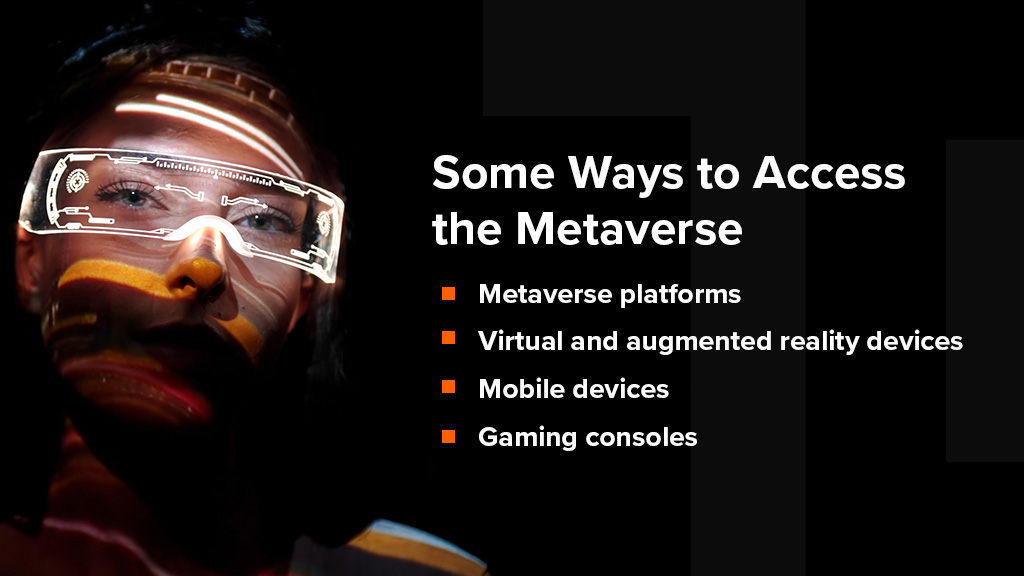
- Metaverse platforms: Several metaverse platforms offer access to the digital world. These platforms can be accessed through a web browser or by downloading software on your device. Some popular metaverse platforms include Decentraland, Second Life and VRChat.
- Virtual and augmented reality devices: AR and VR devices that access meta platforms can create an immersive experience by simulating a real-world environment. Some popular devices include Oculus Quest, Microsoft HoloLens and Magic Leap.
- Mobile devices: Many metaverse platforms have mobile apps you can download on your smartphone or tablet. These apps provide access to the metaverse on the go, allowing users to engage with others and explore the digital world.
- Gaming consoles: Some gaming consoles, such as the PlayStation 5 and Xbox Series X, offer access to the metaverse through games and VR experiences.
It’s important to note that accessing the metaverse requires specific technology capabilities. A high-speed internet connection is essential for a smooth experience, as well as a device with advanced graphics processing capabilities. Some metaverse platforms may also require a cryptocurrency wallet for transactions within the digital world.
What Powers the Metaverse?
The metaverse is a complex system that requires several core technologies to function correctly. These technologies power the metaverse and enable users to interact with each other and the environment seamlessly.
Blockchain and Cryptocurrency in the Metaverse

Blockchain technology plays a crucial role in the metaverse by providing a decentralized and secure way for users to transact with each other. This technology enables the creation of virtual currencies and assets that can be bought, sold and traded within the metaverse. Cryptocurrencies like Bitcoin and Ethereum are typically used in the metaverse and provide a way for users to make transactions without a central authority.
Artificial Intelligence in the Metaverse
AI is used to create non-playable characters (NPCs) that realistically interact with users. These NPCs can be used in games, simulations and virtual environments, providing a more immersive experience for users. AI is also used in the metaverse to personalize user experience (UX) and recommend content based on their preferences.
3D Reconstruction in the Metaverse
3D Reconstruction is critical for creating realistic environments and objects within the metaverse. This technology involves scanning physical objects and environments and converting them into 3D models for use within the virtual world.
Internet of Things in the Metaverse
The Internet of Things (IoT) is a technology that connects physical devices to the internet, enabling them to communicate with each other. In the metaverse, IoT connects virtual devices and objects to the internet, allowing them to interact with each other and users. This technology is used in smart homes and virtual environments to provide users with a more personalized and interactive experience.
Metaverse technology is still in its early stages but has enormous potential. As technology advances, we can expect the metaverse to become more immersive and integrated into our daily lives.
What Is the Metaverse Used For?
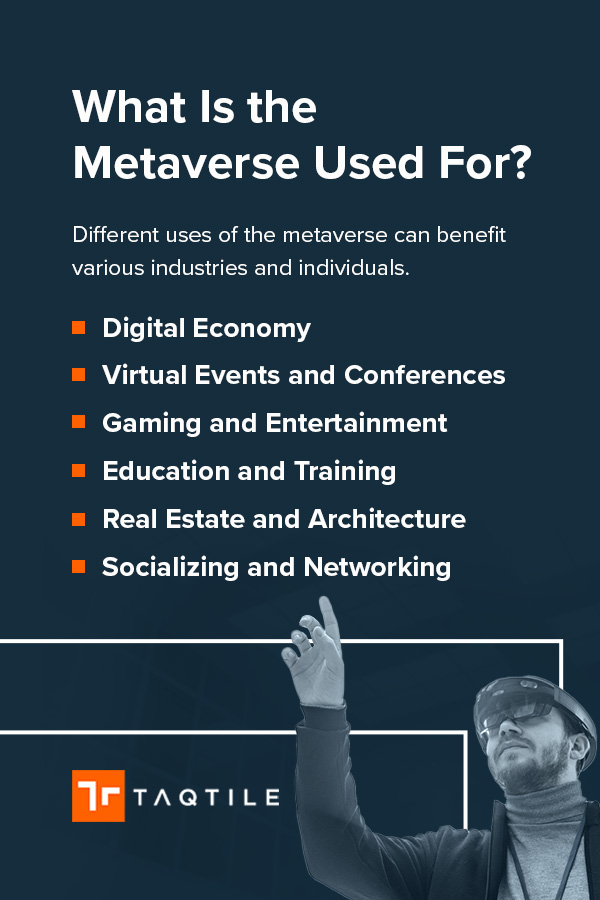
Different uses of the metaverse can benefit various industries and individuals. Let’s explore the different uses of the metaverse:
Digital Economy
The metaverse could be a significant player in the digital economy, allowing for virtual commerce, advertising and even virtual real estate. Users could buy and sell virtual goods and services, such as clothing or furniture, for their avatars, and businesses could use the metaverse platform to reach consumers in a new way. In short, the metaverse is a potential new frontier for digital innovation and economic growth.
Virtual Events and Conferences
One of the most promising uses of the metaverse is for virtual events and conferences. Since the COVID-19 pandemic, many events and conferences have moved online, but the experience often needs to be improved. The metaverse offers a more immersive and interactive experience, enabling attendees to network, attend sessions and interact with sponsors and exhibitors more naturally and engagingly.
Gaming and Entertainment
With the ability to create realistic and immersive virtual environments, the metaverse offers a new level of gaming and entertainment experience. Virtual reality games and simulations are already popular, and the metaverse will take it to the next level, allowing users to interact with each other and the environment more seamlessly and naturally.
Education and Training
Virtual environments can simulate real-world scenarios and provide learners with a safe and controlled environment. This approach is already used in fields like medicine and aviation, where simulations are used to train professionals. Training and education can become more immersive and interactive with the metaverse, providing a more engaging learning experience.
Real Estate and Architecture
Virtual environments can showcase properties and buildings, allowing potential buyers to explore them conveniently and interactively. Virtual models can help test and refine designs, providing a more cost-effective and efficient way of designing and building structures.
Socializing and Networking
With the ability to create virtual environments, users can interact with each other digitally. Virtual events and conferences can be used for networking, and social spaces can be designed for users to meet and socialize.
The Industrial Metaverse
The metaverse can revolutionize how we interact with the digital world, and the industrial sector is no exception. The industrial metaverse is a virtual space replicating the physical world of industry, where businesses can design, test and deploy new products and services in a collaborative environment. The industrial metaverse can enable businesses to create a digital twin of their physical factories, machines and products.
There are several examples of how the industrial metaverse can be used in the industrial sector:
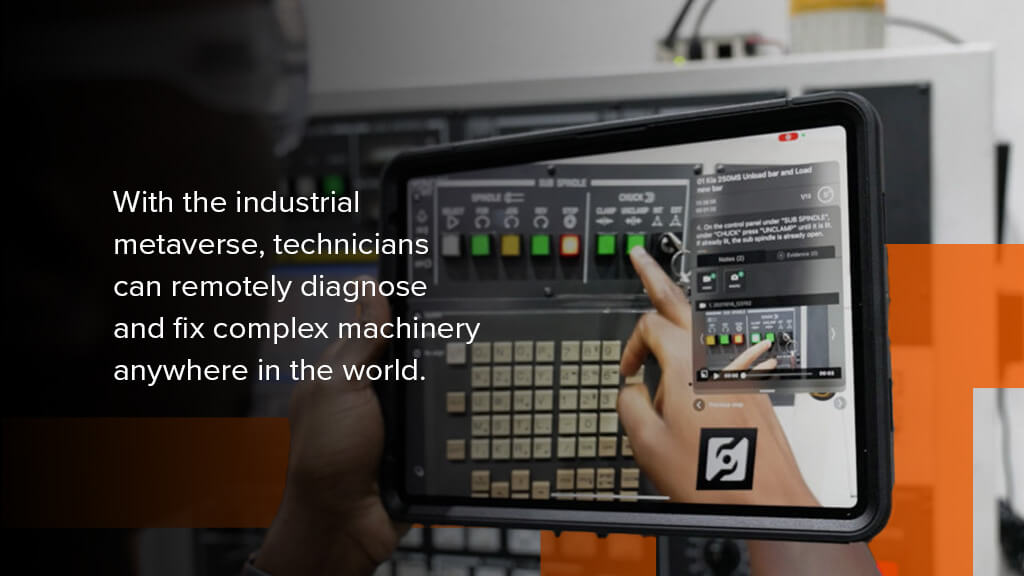
- Remote maintenance: With the industrial metaverse, technicians can remotely diagnose and fix complex machinery anywhere in the world. For example, if a piece of equipment fails in a remote location, a technician can use augmented reality to visualize the equipment and identify the problem. They can then guide a local technician through the repair process using a virtual interface.
- Design and prototyping: The industrial metaverse can be used to design and prototype new products in a virtual environment. This can help businesses reduce development costs and time to market by allowing them to test and refine designs before manufacturing physical prototypes.
- Supply chain management: Businesses can simulate scenarios and identify potential bottlenecks by creating a digital twin of the supply chain. This can help them make more informed decisions and improve overall efficiency.
- Quality control: The industrial metaverse allows businesses to monitor production processes in real time. If a technician is concerned that machinery is creating subpar items, they can scan the equipment and its surroundings using their smartphone camera. The industrial metaverse can then use image recognition and other technologies to analyze the data and identify any issues.
As a result, this virtual environment can be used to simulate scenarios and optimize processes, leading to several benefits:

- Increased efficiency: The industrial metaverse can help businesses increase efficiency by optimizing workflows, reducing downtime and improving collaboration.
- Cost savings: Businesses can reduce maintenance costs and improve operational efficiency by using the industrial metaverse for predictive maintenance and remote diagnostics tasks.
- Improved safety: The industrial metaverse can improve safety by allowing technicians to remotely diagnose and repair machinery, reducing the need for physical contact with hazardous equipment.
- Increased innovation: The industrial metaverse can increase innovation by allowing businesses to design and test products in a virtual environment before committing to physical prototypes.
- Reduced environmental impact: The metaverse can help companies reduce their environmental impact by employing remote expertise from anywhere in the world more efficiently, preventing countless service calls and related carbon emissions due to traveling.
Is the Metaverse Safe?
As with any technology, there are inherent risks associated with using the metaverse. However, the metaverse can be a safe and enjoyable experience with proper precautions and responsible use.
One potential safety concern is the risk of cybercrime. As the metaverse is a digital environment, there is a risk of theft, fraud and other cyberattacks. However, encryption and other security measures may minimize the risk of these threats. It’s also crucial for users to be aware of potential scams and to only interact with trusted sources.
Another potential safety concern is the risk of addiction or other negative impacts on mental health. Users need to set boundaries and balance their use with other activities. It’s also essential for parents to monitor their children’s use of the metaverse and to ensure they’re using it responsibly and safely.
Privacy is another matter. As the metaverse involves sharing personal information and data, users must be aware of their privacy settings and only share information with trusted sources. Companies and developers must prioritize user privacy and be transparent about their data collection and usage policies.
Top Metaverse Projects You Should Know About
Many companies and developers are working on innovative metaverse technologies that will help shape the future of the digital world. As the metaverse continues to evolve and grow, we can expect to see even more exciting developments and opportunities emerge. Here are just a few of the top metaverse projects that are underway:
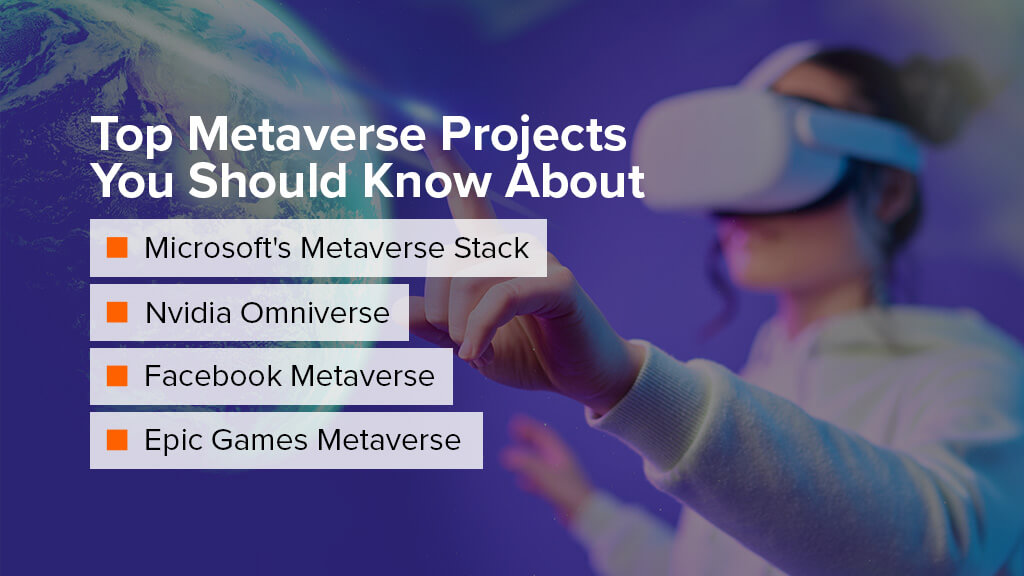
Microsoft's Metaverse Stack
Microsoft has been working on some technologies that will power the metaverse, including its Mesh platform, which allows users to interact with each other in a shared digital environment. The company is also developing its Azure Digital Twins IoT technology, which creates digital models of physical spaces and its HoloLens AR headset, which allows users to interact with digital content in the real world.
Nvidia Omniverse
Nvidia is known for its powerful graphics processing technology, and the company is bringing that expertise to the metaverse with its Omniverse platform. Omniverse allows users to create and interact with 3D models and virtual environments and supports real-time collaboration and physics simulations.
Facebook Metaverse
Facebook has been investing heavily in the metaverse, and the company rebranded itself as Meta to reflect its new focus. Facebook’s Horizon Workrooms platform allows users to collaborate in a shared virtual environment, while the company’s Oculus VR headset provides an immersive way to experience the metaverse.
Epic Games Metaverse
Epic Games, the creator of the popular video game Fortnite, is also investing in the metaverse. The company recently acquired Sketchfab, a platform for creating and sharing 3D models. It’s also working on its Unreal Engine technology, which powers many of the world’s most popular video games. Epic Games has said it sees the metaverse as the future of gaming and entertainment.
The Role of Virtual Reality and Augmented Reality in the Metaverse
The metaverse has been hailed as the next evolution of the internet, and AR and VR technologies are expected to play a critical role in its development. AR and VR provide immersive and interactive experiences, which are essential for creating a realistic and engaging metaverse.
AR refers to the integration of digital information with the real world. In the context of the metaverse, users can see digital objects and information overlaid on the physical world. This technology can create digital twins of real-world environments, which can be accessed and explored in the metaverse. For example, a museum can create a digital twin of its exhibits, allowing users to interact with them remotely.
A VR metaverse can create fully immersive and interactive environments with which users can explore and interact. VR can provide a sense of presence, making users feel like they are actually in the virtual environment. This technology can create virtual storefronts, entertainment venues and social spaces.
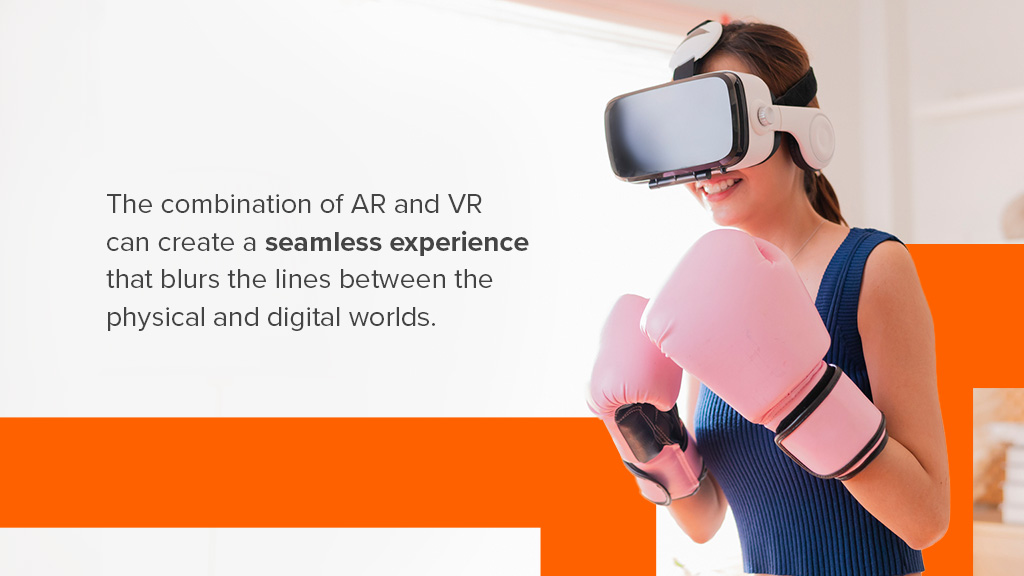
The combination of AR and VR can create a seamless experience that blurs the lines between the physical and digital worlds. For example, a user could be walking down the street while wearing AR glasses that display information about the stores and restaurants around them. They could then enter a virtual store using a VR headset to browse products and make purchases. AR and VR in the metaverse can also enable new forms of collaboration, such as virtual meetings and remote work.
The Future of VR and AR in the Metaverse
The future of VR and AR in the metaverse is exhilarating. As we’ve seen, these technologies have already played a crucial role in the metaverse’s development and will undoubtedly continue to shape it in the future.
One of the most promising developments is the growing popularity of AR glasses, which are expected to become more widely available and affordable in the coming years. This will open up a world of possibilities for the metaverse, allowing users to integrate digital and physical environments seamlessly. Imagine walking down the street with AR glasses and seeing a virtual store that doesn’t actually exist in the physical world or attending a concert in the metaverse with friends while still being able to see and interact with the physical world around you.
Another exciting development is the potential for VR to create more immersive and interactive experiences within the metaverse. As VR technology advances, we can expect to see more realistic environments and avatars and more complex interactions between users. This could lead to new forms of entertainment, education and even remote work as people worldwide come together in the metaverse.
However, some challenges remain before AR and VR become ubiquitous in the metaverse. One of the biggest challenges is creating a smooth user experience. This will require advancements in hardware and software and more sophisticated algorithms for processing and rendering complex virtual environments.
Despite these challenges, the future of AR and VR in the metaverse looks bright. As these technologies evolve and mature, we can expect more immersive, interactive and engaging experiences in the metaverse than we ever thought possible.
Unlock the Full Potential of the Metaverse With AR Software From Taqtile
The metaverse represents a new frontier in the world of technology, offering exciting possibilities for people to connect and engage with one another in virtual spaces. Anyone can participate in this exciting new world with the right tools and guidance.
At Taqtile, we are proud to be at the forefront of this emerging field, developing cutting-edge AR software that empowers deskless workers to complete complex tasks more efficiently and safely than ever before.
Through Taqtile’s Manifest® platform, we offer a cloud-based solution that can be accessed from anywhere, on any device, providing workers with the guidance they need to complete their tasks flawlessly and to completion every time. We believe that the metaverse and AR technology have the power to transform the way we work and live, and we invite you to join us in embracing this exciting new future.
Schedule a free live demo to learn more about how our Manifest® software can benefit your organization or contact us online for more information.





